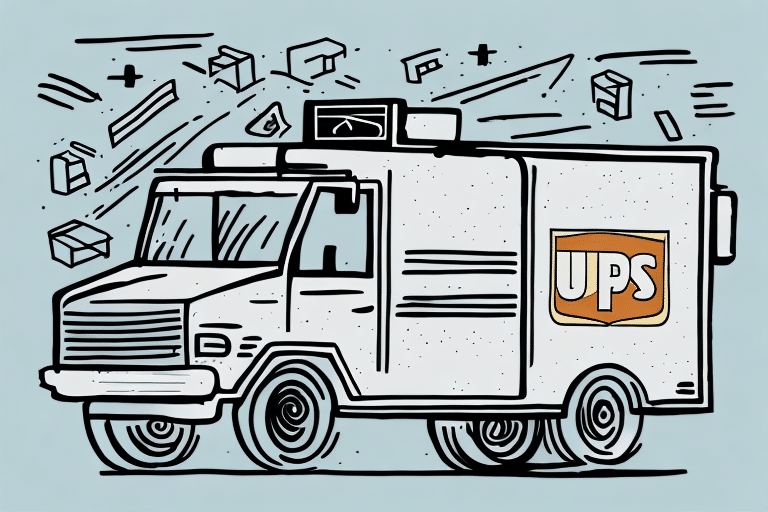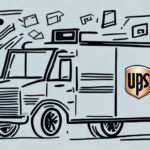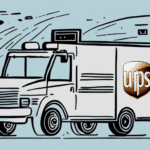Understanding the Basics of UPS Insurance
UPS offers a range of insurance options designed to protect your packages during transit. Depending on the type of service and the declared value, UPS insurance can cover the value of your package up to a specified limit. This coverage ensures that if your shipment is lost, delayed, or damaged, UPS will reimburse you for the value of the lost or damaged items.
It's important to note that UPS insurance does not cover certain high-value items such as cash, jewelry, and antiques unless additional coverage is purchased. Additionally, UPS may require proof of value for specific items to process a claim. Therefore, it's crucial to thoroughly review the terms and conditions of UPS insurance before selecting a coverage option.
Filing a claim with UPS is straightforward and can be done online or by contacting UPS customer service. To initiate a claim, you'll need to provide details about the package, including the tracking number and proof of value. UPS will then investigate the claim and determine the appropriate resolution, which may include reimbursement for the lost or damaged items.
Types of Packages Eligible for UPS Insurance
UPS insurance is available for most types of packages shipped through their various services, including:
- UPS Ground
- UPS 3 Day Select
- UPS 2nd Day Air
- UPS Next Day Air
However, certain items such as jewelry, precious metals, and collectibles may require special insurance or handling. It's best to contact UPS customer service to confirm the specific requirements for your package, ensuring that your items are properly insured.
UPS Insurance Coverage Limits and Options
The amount of insurance coverage UPS offers varies based on the declared value of the package. UPS provides different insurance levels, with coverage ranging from $100 up to $100,000. For higher-value items, UPS offers declared value coverage, allowing shippers to declare a higher value for their packages. The cost of declared value coverage is contingent on the declared amount.
It's important to understand that UPS's liability for lost or damaged packages is limited to the declared value or the actual value of the package, whichever is lower. For example, if a package with a declared value of $500 is lost but the actual value of the contents is $200, UPS will only reimburse up to $200.
Additionally, UPS offers special handling options for packages that require extra care, such as fragile or perishable items. These options may include additional insurance coverage, as well as specialized packaging and handling procedures to ensure the safety and integrity of your shipment.
Declared Value Coverage
Declared value allows you to specify a higher value for your package, providing greater protection against loss or damage. The cost of declared value coverage is determined by the value declared and must be selected at the time of shipment.
Determining the Value of Your Package for Insurance
Accurately determining the value of your package is essential to ensure you have adequate insurance coverage. The value is typically based on the replacement or repair cost of the items being shipped, and should also consider additional costs such as shipping fees, taxes, and customs duties.
To determine the value:
- Create an itemized list of all items being shipped along with their corresponding values.
- Include receipts or invoices as proof of value.
- Use online resources such as price comparison websites or marketplaces to determine current market values.
Regularly review and update the value of your package, especially for items that may appreciate over time, to ensure your coverage remains adequate.
Exclusions and Limitations of UPS Insurance
While UPS insurance provides extensive coverage, there are certain exclusions and limitations to be aware of:
- Prohibited Items: Illegal drugs, hazardous materials, and live animals are not covered.
- Poor Packaging: Loss or damage resulting from inadequate packaging, improper labeling, or missing documentation is not covered.
- International Shipments: UPS insurance does not automatically cover internationally shipped items; separate insurance must be purchased.
- Declared Value Limits: Coverage is limited to the declared value or the actual value, whichever is lower.
Adhering to UPS packaging and labeling guidelines is crucial to ensure your insurance coverage remains valid. Additionally, when shipping internationally, verify the destination country's customs regulations and obtain the necessary documentation.
Filing a UPS Insurance Claim
If your package is lost or damaged during transit, you can file a claim with UPS to seek reimbursement. The claims process involves the following steps:
- Gather Information: Collect the tracking number, proof of value, and details about the loss or damage.
- Submit the Claim: File the claim online through the UPS Claims page or contact UPS customer service.
- Provide Documentation: Upload supporting documents such as receipts, invoices, and photos of the damage.
- Claim Investigation: UPS will review and investigate the claim, which may involve additional communication or information requests.
- Receive Resolution: If approved, UPS will reimburse the declared value of the package and applicable shipping costs.
Note the following time limits for filing claims:
- Lost Packages: Claims must be filed within 60 days of the scheduled delivery date.
- Damaged Packages: Claims must be filed within 30 days of the delivery date.
Missing these deadlines may result in the denial of your claim. If your claim is denied, you can appeal the decision or seek legal action against UPS.
Best Practices for Packaging to Ensure Safe Delivery and Coverage
Proper packaging is essential to protect your items during shipping and to comply with UPS insurance requirements. Follow these best practices:
- Use Sturdy Boxes: Select boxes that are strong enough to withstand handling and transportation.
- Provide Adequate Cushioning: Use materials like bubble wrap, packing peanuts, or foam to secure items and prevent movement within the box.
- Label Clearly: Ensure all packages are clearly labeled with the correct destination address and include a shipping invoice or packing slip.
- Handle Fragile Items with Care: For fragile or valuable items, consider using additional insurance or certified mail options for extra protection.
- Consider Weather Conditions: Use appropriate insulation materials for shipments during extreme temperatures or protect items sensitive to moisture with waterproof packaging.
Additionally, ensure that the package weight and size comply with UPS guidelines to avoid overpacking or underpacking, which can lead to damage or delays.
Alternative Shipping and Insurance Options
While UPS is a reliable shipping option, there are alternative providers and insurance options to consider based on your specific needs:
- FedEx: Offers similar shipping services with varying insurance coverage options.
- United States Postal Service (USPS): Provides shipping solutions with insurance options tailored for different package values.
- Third-Party Insurance Providers: Companies like InsureShip offer additional coverage options that may suit high-value or specialized shipments.
Comparing different providers and insurance options can help you find the most cost-effective and comprehensive coverage for your shipping needs.
Conclusion
Shipping packages with UPS offers the advantage of insurance coverage to protect your shipments against loss or damage. By understanding UPS insurance policies, selecting appropriate coverage levels, and adhering to best practices for packaging, you can ensure that your packages are well-protected during transit.
Always accurately declare the value of your packages to avoid underinsurance and consider additional insurance or certified mail options for valuable or fragile items. Additionally, exploring alternative shipping and insurance options can provide you with more tailored solutions to meet your specific shipping requirements.
Finally, some credit card companies offer shipping insurance as a benefit to their cardholders, which can be a convenient and cost-effective way to secure your shipments. Be sure to review the terms and conditions of any credit card-based insurance to ensure it meets your coverage needs.




















